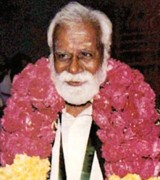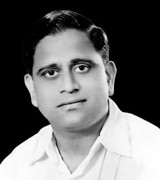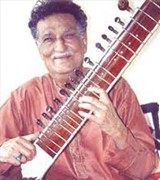COVER STORY
NEYVELI SANTHANAGOPALAN - A pearl from the lignite belt
S. JANAKI

"Music is my guiding light,” says senior Carnatic vocalist Neyveli Santhanagopalan. Neyveli—the region famous for its lignite reserves—has become synonymous with Carnatic musician Santhanagopalan who grew up in the sylvan surroundings of the Neyveli Lignite Corporation township. The spark was lit for him in early childhood by his parents who were connoisseurs of music. In his teens, it became an all-consuming passion to learn music, which he did from different teachers till he found the guru of his dreams in maestro T.N. Seshagopalan, quite the rage among Carnatic vocalists in the 1980s and 90s. Neyveli equipped himself and became a successful Carnatic vocalist with an enviable performing calendar; and he soon reached the top of the young concert musicians’ circuit. Very fond of poetry and Tamil literature, he had already tried his hand at composing songs. Deriving immense joy from music and driven by the desire to teach and share his knowledge with anyone willing to learn, he established a music school, whose roster of students swelled.
CENTENARY TRIBUTE
Memories of a much loved teacher
V. RAMNARAYAN

Dr. S. Ramanathan—whose centenary is being observed beginning this month—was a much loved musician and teacher of Carnatic music. His humility and easy accessibility successfully hid his depth of knowledge and intellectual prowess from the casual observer, but he was an inspiring mentor and resourceperson to musicians and music scholars who sought his help in their researches. As Sruti N. Pattabhi Raman said in his obituary in the April 1988 issue of the magazine, he “was the first person in Carnatic music who shone as both a musicologist and musician.”
Ramanathan loved his legion of students and they adored him, too, to go by the stories describing the sheer joy and informality pervading his classes.
PROFILE
GHANTASALA VENKATESWARA RAO
RANGANATH NANDYAL

Ghantasala Venkateswara Rao was an enviable singer-composer. He composed music for 110 movies in Telugu, Tamil and Kannada. To paraphrase playback singer P.B. Srinivos, most of the movies for which Ghantasala composed music, celebrated satadinotsav (100 days), rajatotsav (250 days) or some other milestone. According to Savitramma Ghantasala, music director Ilayaraja recalled that when a producer asked him to make every song in his movie a hit, he retorted saying, “I am not Ghantasala to achieve such a feat”.
As a lad, Ghantasala was diligent, sensitive, imaginative and creative. Providence led him to the Vizianagaram Music College where maestros like Dwaram Venkataswamy Naidu and Patrayani Seetharama Sastri taught. In rendering songs based on classical ragas, Ghantasala followed the approach of Seetharama Sastri. From him he learnt how to coordinate sangeetawith sahityaand why technicalities should not be pursued undermining bhava. Being a diligent boy, he did sangeeta sadhana every day from 3 am for hours together at the Vyasa Narayana temple located on a hillock near his college. Practising every day for five years, Ghantasala acquired command over the subtleties and complexities
of ragas.
TRIBUTE
Abdul Halim Jaffer Khan (1927-2017)
Meena Banerjee

Sitar maestro Abdul Halim Jaffer Khan, who passed away at his Bandra (Mumbai) residence on 4 January 2017, was in the league of such great names in the field as Ravi Shankar, Vilayat Khan and Nikhil Banerjee. He effortlessly straddled the worlds of Hindustani classical music and Hindi cinema, and established ‘Jafferkhani baaj’—a unique style of playing the instrument. He was highly decorated, receiving such awards as the Tantri Vilas, Padma Shri, Padma Bhushan, Tagore Samman and the Central Sangeet Natak Akademi Award.
How did Halim Jaffer Khan achieve such eminence at a time when the legendary sitar triumvirate were at their peak? This question haunted me, and I put it to him when, during his last Kolkata visit in 2004, I met him at the residence of his prime disciple Harashankar Bhattacharya, whom he fondly addressed as his ‘bada beta’ (elder son). He took the question very sportingly and answered, “Riyaaz ki roshni ne raah kar di” (Devoted practice illuminated my path) and my disciples are now following it. In 1976, I founded the Halim Academy of Sitar in Mumbai. Zunain, my son-disciple and a few dedicated disciples like Prasad Joglekar and Gargi Shinde have come forward to take care of the Academy; and Harashankar founded Madhyami here in Kolkata to promote and propagate Jafferkhani baaj. His boy Deepshankar is showing great promise of keeping the flag flying high.”


